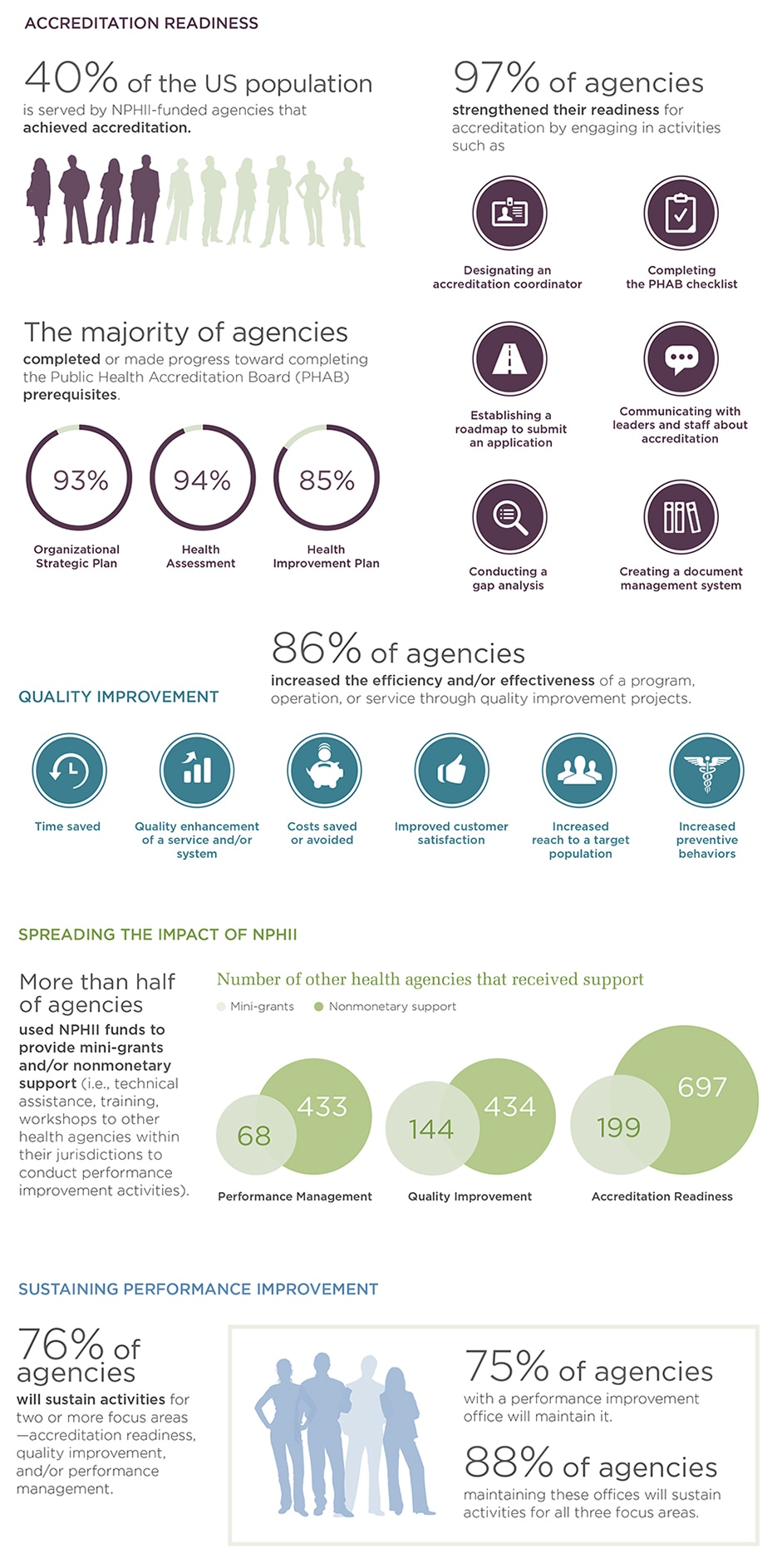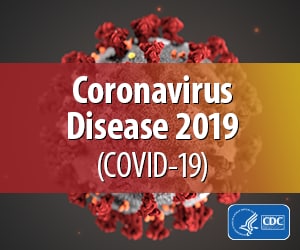National Public Health Improvement Initiative
Overview
The National Public Health Improvement Initiative (NPHII) was an innovative program started by CDC to infuse quality and performance improvement methods in health departments across the United States. During 2010–2014, NPHII provided funding and technical assistance to health departments in
- 48 states and the District of Columbia
- 9 cities or counties serving large populations
- 4 US territories
- 3 US-affiliated Pacific Islands and 1 Pacific Island organization
- 4 federally recognized tribes and 4 tribal organizations that support 250 federally recognized tribes
Objectives & Activities
Most federal public health funding supports programs that focus on specific diseases, health issues, or population segments, known as categorical funding. Health departments often struggle to identify adequate resources for building a strong organization that can be nimble in the face of emerging issues and handle the public health responsibilities not covered by categorical funding. NPHII complemented CDC’s categorical investments by allowing agencies to strengthen organization-wide capacities, systems, and processes.
NPHII’s major objectives and activities included
- Accelerating public health accreditation readiness activities
- Improving organizational efficiency and effectiveness through quality improvement activities
- Increasing performance management capacity
Results
Advancing Public Health: The Story of the National Public Health Improvement Initiative [PDF-12MB]
This compendium describes NPHII’s accomplishments, impact, and lessons learned. It also includes 71 stories from state, tribal, local, and territorial health departments that illustrate how NPHII funding improved their efficiency and effectiveness.
NPHII’s Accomplishments
NPHII’s four years of support helped awardees integrate performance improvement into their organizations’ culture in an unparalleled way that better positioned them to sustain these efforts. Through NPHII, agencies increased their ability to make data-driven decisions for priority setting, program planning, and implementation; eliminated siloes through partnerships and collaborations; strengthened the culture for performance improvement; and institutionalized these practices within the agency.

